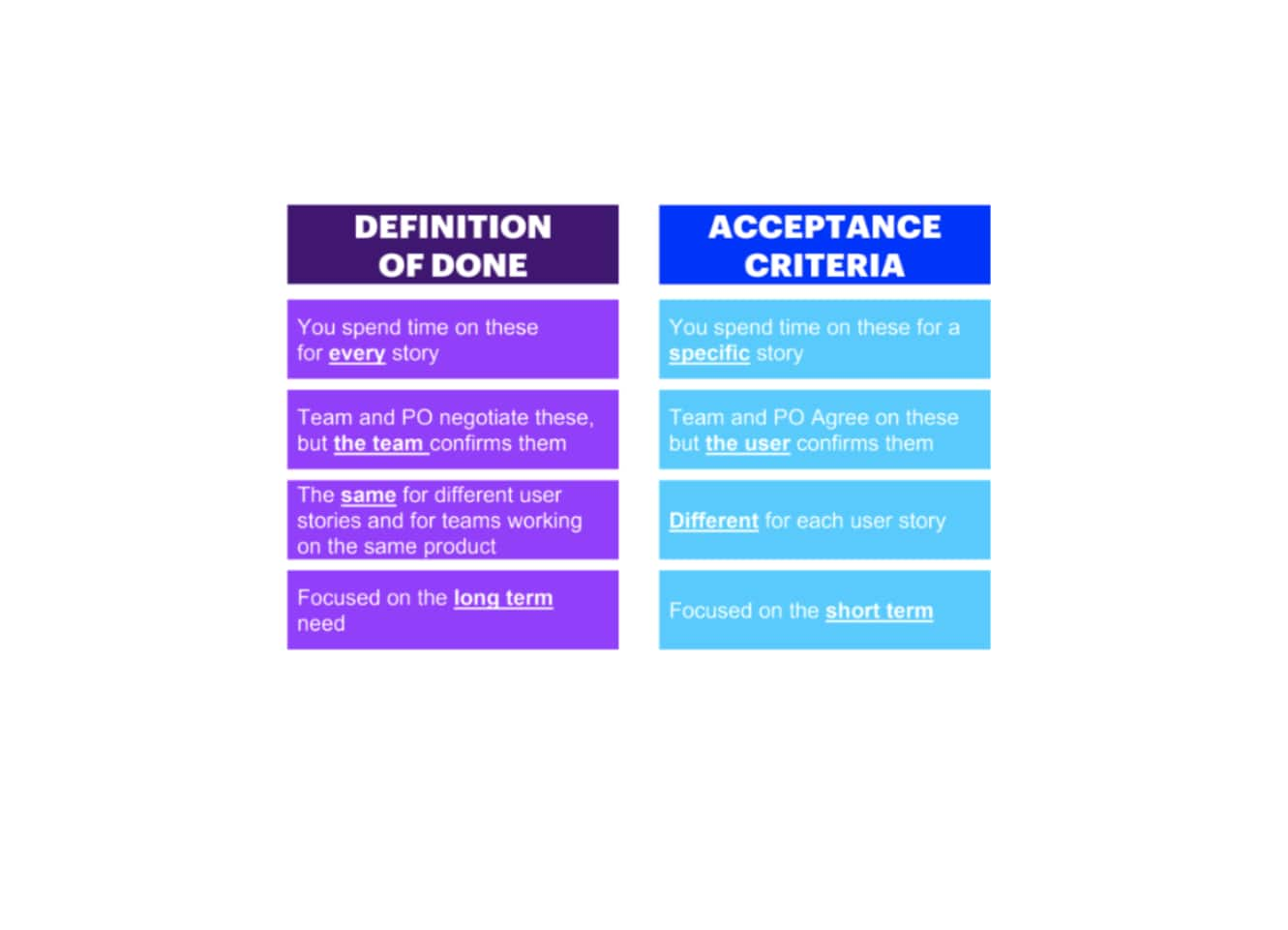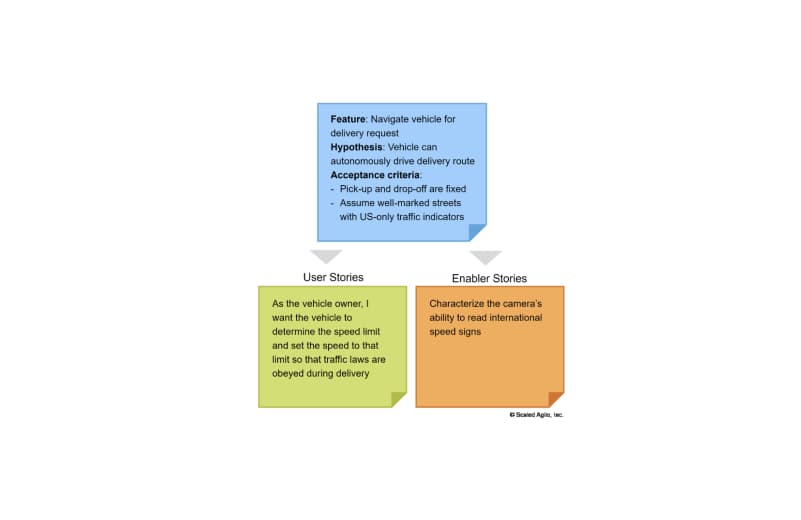Definition
User stories are short, simple descriptions of a requirement told from the perspective of the person who would like a new feature.
User Stories are the basic unit of communication, planning, and negotiation between the Scrum Team, Business Owners, and the Product Owner. Stories consist of the following elements:
A description, usually in business terms
A size, for rough estimation purposes, generally expressed in story points (such as 1, 2, 3, 5...)
An acceptance test, giving a short description of how the story will be validated.
Stories help create small “chunks” of value that can predictably be designed, built, and tested in a shorter interval e.g., a Sprint. Properly written and executed, a user story enables rapid feedback that promotes faster learning over the course of iterative & incremental development cycles.
Qualities of a good User Story
- Captures user’s expectations
- Is in the language of the user, not technical details/language
- Facilitates testing development
- Highlights the value of the story
- Helps in building a common understanding of the problem
- Helps team in sizing the story
- Contains acceptance criteria to capture the expected behavior of the story and aids the testing team in developing test cases.
INVEST Model
- Independent: Independent (among other stories) Stories should not be dependent on other stories.
- Negotiable: Negotiable (a flexible statement of intent, not a contract) Stories should capture the essence of the requirement and should not represent a contract on how to solve it.
- Valuable: Valuable (providing a valuable vertical slice to the customer) Stories should clearly illustrate value to the customer.
- Estimable: Estimable (small and negotiable) Stories should provide just enough information so they can be estimated.
- Small: Small (enough to fit within an iteration) Stories should strive to be granular enough in scope that they may be completed in as little time as possible, preferably a few days or a week with the preference to the smaller duration.
- Testable: Testable (understood enough to know how to test it) Stories need to be understood well enough so that tests can be defined for them.
Common Anti-Patterns
- Team is consistently unable to complete User Stories within the Sprint (frequent carry forward of incomplete Stories)
- Team and the Product Owner are not confident to deliver according to the Sprint Plan
- Too many defects and re-work
Splitting User Stories
- Split using CRUD (Create, Read, Update, Delete) boundaries
- Deliver incremental business value
- Split by User Roles
- Split by Acceptance Criteria
- Split by workflow steps or events






